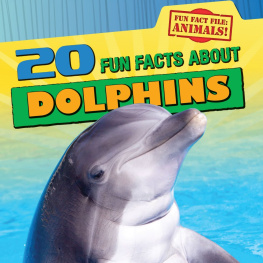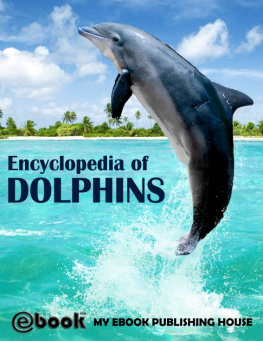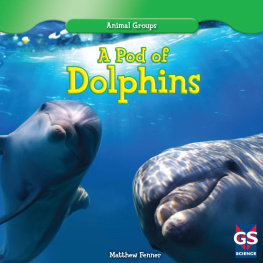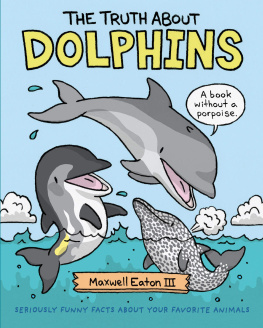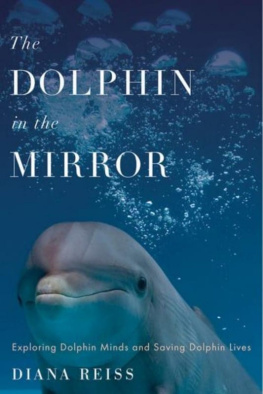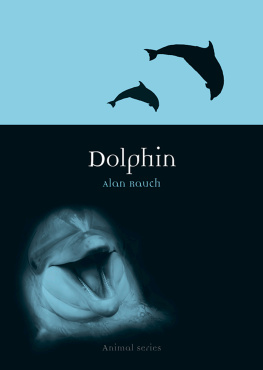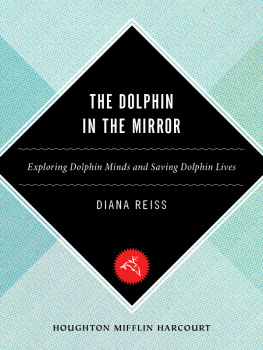Dolphin Mysteries

DOLPHIN MYSTERIES
Unlocking the Secrets of Communication
KATHLEEN M. DUDZINSKI, PH.D. TONI FROHOFF, PH.D.
ILLUSTRATIONS BY JOHN NORTON
PHOTOGRAPHY BY JOHN ANDERSON

Published with assistance from the foundation established in memory of Philip Hamilton McMillan of the Class of 1894, Yale College.
Copyright 2008 by Kathleen M. Dudzinski and Toni Frohoff. All rights reserved. This book may not be reproduced, in whole or in part, including illustrations, in any form (beyond that copying permitted by Sections 107 and 108 of the U.S. Copyright Law and except by reviewers for the public press), without written permission from the publishers.
Baby Beluga, words by Raffi and D. Pike; music by Raffi; 1980 Homeland Publishing (SOCAN), a division of Troubadour Music, Inc. All rights reserved. Used by permission.
Whales Weep Not! by D. H. Lawrence, from The Complete Poems of D. H. Lawrence, by D. H. Lawrence, edited by V. de Sola Pinto and F. W. Roberts, copyright 1964, 1971 by Angelo Ravagli and C. M. Weekley, Executors of the Estate of Frieda Lawrence Ravagli. Used by permission of Viking Penguin, a division of Penguin Group (USA) Inc., and Pollinger Limited (UK).
Bizarro cartoon copyright 2008 by Dan Piraro.
Designed by Nancy Ovedovitz and set in Janson Oldstyle by Duke & Company, Devon, Pennsylvania. Printed in the United States of America.
Library of Congress Cataloging-in-Publication
Data
Dudzinski, Kathleen.
Dolphin mysteries: unlocking the secrets of
communication / Kathleen M. Dudzinski and
Toni Frohoff.
p. cm.
Includes bibliographical references and index.
ISBN 978-0-300-12112-4 (clothbound: alk. paper)
1. DolphinsBehavior. 2. Animal communication.
I. Frohoff, Toni, 1963 II. Title.
QL737.C432D836 2008
599.53159dc22 2008017678
A catalogue record for this book is available from the British Library.
This paper meets the requirements of ANSI/NISO Z39.48-1992 (Permanence of Paper).
10 9 8 7 6 5 4 3 2 1
KMD For John, who often understands my signals even when I do not
For Umi, who has taught me that actions often speak louder than words
TF For my loved ones, who have been like a pod to me, and for the dolphins who continue to guide my way without saying a word
Contents
Foreword
Dolphin Mysteries is a wonderful and very welcome book about a poster child of sentient beings. But its really many books in one. Its scope is truly enormous, and Kathleen Dudzinski and Toni Frohoff are to be congratulated for getting so much important and timely information between two reasonably spaced covers. What sets this book apart from many others that deal with dolphins and their relatives is that not only is it written by two expertstwo passionate women who have devoted much of their waking (and perhaps their dream) lives to dolphinsbut it presents a diverse array of information that surely will be educational to a broad audience, academic and lay people alike. Dolphin Mysteries will appeal to anyone who wants to know more about these amazing animals and will inspire those who want to improve the lives of captive dolphins and their more fortunate relatives who live free, or almost free, of human intrusions. It is scientifically rigorous, is easy to read, and has plenty of heart. What a wonderful combination.
As I read this book, I often thought of Thomas Berrys claim that a group of individuals really is a communion of subjects, not merely a collection of objects. This surely is true for dolphins and many other animals who must be able to live in harmony with other sentient beings, including those who persecute them. Kathleen and Toni show clearly that dolphins are amazing individuals. Most descriptions of dolphins and other cetaceans portray them as highly intelligent, sentient animals with remarkable social and cognitive skills. Theyre highly emotional, playful, seem to empathize with one another, have a sense of self, and mourn the death of other dolphins. We now know that individuals of many species use tools, have culture, are conscious and have a sense of self, can reason, can draw, can self-medicate, and show very complex patterns of communication that rival what we call language.
As you read this fine book and learn more about the world of dolphin communication and cognition, youll see that dolphins are more remarkable and mysterious than you could have imagined. By going beneath the surface, experts Kathleen and Toni open up doors of perception and give us a glimpse into the world of dolphins from both beneath the waters surface and behind the dolphins smile. In the spirit of classical ethologists such as Konrad Lorenz and Niko Tinbergen they ask, What is it like to be a dolphin? and provide up-to-date information about numerous aspects of dolphin natural history, behavior, behavioral ecology, sensory ecology, intelligence, conservation, and anatomy and physiology.
A few years ago I published an essay in a book titled Intimate Nature that was coedited by Toni and Brenda Peterson. My essay was called Troubling Tursiops, an obvious play on the genus of bottle-nosed dolphins, Tursiops truncatus. The title has two meanings. The first twist on the word troubling concerns how humans trouble Tursiops, how we intrude into their worlds, how we bother them intentionally and unintentionally. The second twist on this word concerns the troubling and complex issues that arise when we ponder what sort of intrusions, if any, are permissible. I began my essay by describing how I was once standing in line at a grocery store and overheard a girl tell her friend that shed just gone swimming with dolphins when on holiday in Hawaii. She had a great time, but there was a slight pause when her friend asked her about what the dolphins might have felt about all of this. She asked, did they enjoy her touching them or riding on their back? Did they really like being bothered? I was pleased to see questions about ethics being raised by a youngster.
As a scientist, I believe that it is in the best traditions of science to ask questions about ethics. Its not antiscience to question what we do when we study other animals. Ethics can enrich our views of other animals in their own worlds and in our different worlds, and it can help us to see that variations among animals are worthy of respect, admiration, and appreciation. The study of ethics can also broaden the range of possible ways in which we interact with other animals without compromising their lives. Ethical discussion can help us to see alternatives to past actions that have disrespected other animals and, in the end, have served neither us nor other animals well. In this way, the study of ethics is enriching to other animals and to ourselves in that we may come to consider new possibilities for how we interact with beings with whom we share our planet. If we think ethical considerations are stifling and create unnecessary hurdles over which we must blindly jump in order to get done what we want to get done, then well lose rich opportunities to learn more about other animals as well as ourselves.
Cetaceans are closely linked to the wholeness of many ecosystems, and how they fare is tightly associated with how communities and ecosystems fare. Dolphins are also closely linked to our own spirituality. By paying close attention to what we do to them and why we do what we do where and when we do it, we can help maintain the health of individuals, species, populations, ecosystemsand ourselves. Theres no substitute for respecting animals, treating them with heartfelt compassion, and loving them for who they are in this magnificent and awe-inspiring world. Could anyone reasonably argue that a world with less cruelty and destruction and more compassion and love wouldnt be a better place in which to live and to raise children? I dont think so.
Next page

